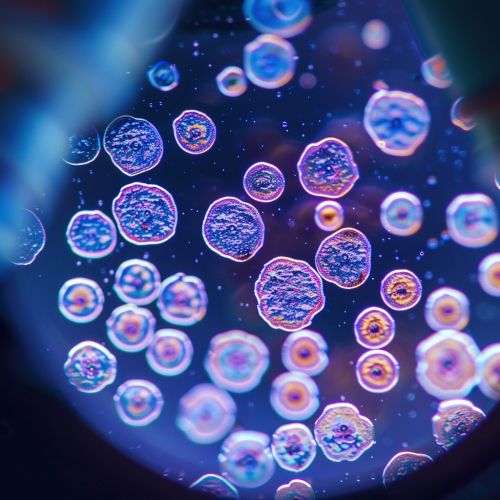Exoelectrogens
Introduction
Exoelectrogens are a group of microorganisms that have the ability to transfer electrons outside of their cells during the process of anaerobic respiration. This unique ability allows them to utilize solid substances, such as metals, as terminal electron acceptors. The term "exoelectrogen" is derived from the Greek words "exo," meaning outside, and "electron," referring to the subatomic particle that carries a negative charge.


Biological Mechanism
Exoelectrogens have developed a unique mechanism to transfer electrons to extracellular electron acceptors. This process involves the use of specialized proteins and membrane transport systems. The electron transfer can occur directly through conductive pili (also known as nanowires) or indirectly through soluble redox mediators.
Direct Electron Transfer
In direct electron transfer, electrons are transferred from the cell to the electron acceptor through conductive pili. These pili are protein filaments that extend from the cell surface and act as biological wires. The most well-studied exoelectrogens, such as species of the genus Geobacter, use this method.
Indirect Electron Transfer
In indirect electron transfer, exoelectrogens secrete redox-active molecules known as mediators. These mediators shuttle electrons from the cell to the electron acceptor. This method is used by species such as Shewanella oneidensis.
Role in Bioelectrochemical Systems
Exoelectrogens play a crucial role in bioelectrochemical systems (BESs), which are devices that use biological materials to catalyze electrochemical reactions. In BESs, exoelectrogens transfer electrons to an electrode, creating an electric current.
Microbial Fuel Cells
One of the most common applications of exoelectrogens is in microbial fuel cells (MFCs). In MFCs, exoelectrogens oxidize organic matter and transfer the resulting electrons to an anode, generating electricity.
Bioelectrochemical Wastewater Treatment
Exoelectrogens also have potential applications in the field of wastewater treatment. They can be used in bioelectrochemical systems to remove pollutants from wastewater while simultaneously generating electricity.
Environmental Significance
Exoelectrogens play a significant role in the environment, particularly in the cycling of metals and other elements. They can reduce insoluble metal oxides, converting them into soluble forms that can be used by other organisms. This ability can also be harnessed for the bioremediation of contaminated environments.
Future Research and Applications
While the study of exoelectrogens is still a relatively new field, it holds great potential for future applications. Research is currently being conducted on using exoelectrogens in bio-batteries, biosensors, and other bioelectrochemical devices. Additionally, understanding the mechanisms of extracellular electron transfer could provide insights into the evolution of respiratory processes.
